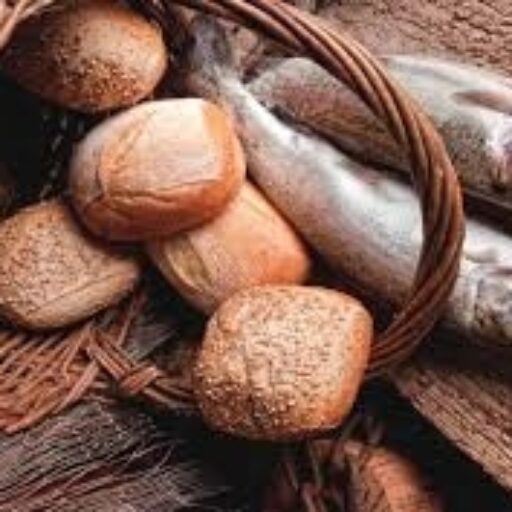
by Vincent | Feb 20, 2014 | General Interest, Reflections, Religion
I was going to a Day Conference in Dublin on Wednesday 19th. Sometime on Monday, it crossed my mind that I might use the train. It’s not a mode of transport I avail of very often and when I checked the venue for the conference, the advantages of rail travel seemed unquestionable as it was just about ten minutes walk from Connolly Station. I went on line, booked the ticket and was happy with my decision.
Getting up early on Tuesday, I was at the Station in Boyle just after 6am, parked the car (paid and displayed!!) and walked to the platform where I collected my ticket from the machine. There were three or four others there and a few more came along. I noticed a handwritten note on the Station Door. It said there would be a bus transfer to Carrick-on-Shannon and when I mentioned this to some of the other travellers I was told the transfer would take us to Longford! Ouch!
The track was flooded somewhere around Carrick-on-Shannon so train could not travel. The bus arrived on time – a lovely bus (in all fairness) and we got on board. I sat beside an older lady from Sligo who asked me “is that a smartphone?” Feeling less smart than the phone, I said it was and she asked if I could get a number for hospital where she had an appointment as she was going to be late. We had a pleasant conversation and realised we knew a few people in common.
Arriving in Longford, the expectation was that there would be a train, revved up and ready for off but … expectations can be overly ambitious!! About forty minutes later a train pulled out of the station in one direction, turned and came to the platform. We boarded.
I bought coffee and a sandwich and had more or less finished them when an announcement was made that due to the lateness of the train and by way of apology, free teas and coffee would be made available to all passengers. €7.10 down, the “trolley service” was a memory!! If only I’d waited!!!
The journey homewards was similar. We stopped in Longford and though, no announcement was made, we were to know that we should get off the Sligo Train there (well that’s what you do when you’re expecting to go all the way to Sligo!!) and get on a bus for Carrick-on-Shannon where we’d be met by the Sligo Train. Again, we did this and the journey continued and, for me, concluded in Boyle about forty minutes behind time.
The train was lovely, I met some nice people along the way and I’ve no major regrets. It was not as smooth as I had imagined or hoped but could have been worse.
I had two “complaints” I suppose – firstly I thought some reference should have been made to this situation on Irish Rail’s website since it was clear, in advance, there was going to be a problem. Secondly, I thought passengers could have been slightly better informed about what was happening, including an announcement that the the journey to Sligo would be terminating in Longford, continued by bus to Carrick and … I think people would have appreciated to be told what was happening. That said, it wasn’t a major problem. I think the conference I was at helped me to realise that …..
The conference was on Emigration and Immigration and had the title “Journeying Together: Challenges Facing the Migrant Today” In the opening segment of the conference we had three speakers:
– Archbishop Diarmuid Martin, Archbishop of Dublin and Vice President of the Irish Bishops’ Conference;
– Mr Stefan Kessler, Policy and Advocacy Officer for the Jesuit Refugee Service, Europe;
– Ms Cecilia Taylor-Camara, Senior Policy Adviser, Office for Migration Policy of the Catholic Church in England & Wales.
Each spoke movingly of the journey made by and with the migrant. Archbishop Martin spoke (during a well- thought out and delivered address) of Pope Francis’ first official visit outside of Rome:
It will not have escaped anyone that Pope Francis after his election decided to make his first journey outside Rome to the Italian island of Lampedusa, which is in many ways a symbol of how the aspirations of those who seek a better chance for themselves and for their children have been exploited. Hundreds have died on their journey across the Mediterranean, many of them women and children. People have been forced to spend their entire savings and those of their families to exploitative ship owners, if ship is the appropriate term. Great credit is due to the people of that small island who have done much to provide an initial welcome to immigrants and whose own tourist based economy has genuinely suffered.
For the last speaker, in particular, that was a difficult and painful journey. Equally Mr Kessler gave a chilling example of the experience of one such migrant coming to seek help in our country. Perhaps an extract might be helpful:
Hadiyah is from Iraq. One day armed men invaded her village and kidnapped her two sons, aged 16 and 18, along with the other young men in the region. A week later the boys were brought back and killed in front of their parents. Hadiyah’s outspoken condemnation of this atrocity led to numerous death threats, forcing her husband and two daughters to another village and Hadiyah out of Iraq with their 12-year-old son.
They arrived to Ireland in the hope of finding protection. Instead Hadiyah was arrested and imprisoned for not having the right documents. Her son was taken by social workers and put in the care of the social service.“Why are they doing this to me, to us?” Hadiyah cried to a JRS worker.
“I was told my son and I would be safe, that my husband and two daughters would come later. But instead I am in prison. I do not know where my son is being kept. My other two sons are in a grave in Iraq. I do not know where my husband and daughters are. I just want to die.”
Such cases are reported not only from Ireland but from many other European Union Member States as well. You could get the impression that there is a race for stinginess among Member States, a contest on who is treating protection-seekers worst.
Ms Taylor-Camera spoke from first hand experience:
My journey as a migrant started in Africa during one of the world’s most brutal civil wars that was characterised by amputations, in a country historically referred to as the ‘Whiteman’s Grave’ and was known to be the home of freed slaves from the Trans-Atlantic Slave Trade.
On 25 May 1997, the civil war in Sierra Leone, West Africa (my home country), reached its pinnacle when Freetown, the capital city, fell into the hands of the rebel Revolutionary United Front (RUF). Freetown was under siege and its citizens were helpless. My family was housebound under the barrage of AK47 gun shots and rocket-propelled grenades (RPGs). We lived near the military ordinance, a prime target of the RUF. Bullets were fired indiscriminately from the military ordinance directly opposite our house. Two stray bullets landed in our living room as our house was within the area of military operation. I had just removed the cushion from the sofa when one of the bullets missed my head by a hair’s breath. It was a near death experience for me.
I reached out for my Bible, looked over the hills from behind the curtains and prayed the words of Psalm 121:1 with deep conviction:
“I will lift mine eyes unto the hills from whence comes my help,
My help comes from the Lord which made heaven and earth”.
A week later the British Government assessed the situation as ‘very serious’ and advised its nationals to leave the country. The British High Commission in Freetown organised the evacuation of non-essential staff, their dependents and other British nationals who wanted to leave. My husband advised that I leave the country and take the children to safety while we could. The family was forced to be separated and I embarked on a perilous journey by land, sea and air with my two children, then aged two and four years old.
Initially I was denied access to board the vessel to Conakry, the capital of neighbouring Guinea, because I had a Sierra Leonean passport. My children had EU passports so they could travel – but unaccompanied by their Sierra Leonean mother as the evacuation was for British nationals only. I was however assured that the children would be looked after on the journey I looked at my children, squeezed their palms into mine as if for the last time, and thought I could not be separated from them.
I pleaded with the British commanding officer not to be separated from my children who were already traumatised by the events of the previous week. Fortunately God touched his heart and he allowed me to travel with my children. The three of us were evacuated by a French Naval vessel to Conakry, and then to the UK on a special flight to Stansted airport. I arrived at Stanstead with the children on 2 June 1997.
My husband arrived after a week and we were reunited as a family. However, that week long separation seemed like the longest week in my life. My husband brought with him just one holdall after living and working in Sierra Leone for fifteen years. He was unable to retrieve the only suitcase we had packed for the emergency (containing our valuables and important documents) as the rebels had invaded and taken over the area where we hid the suitcase.
My family never expected to be away from home (Sierra Leone) for more than a few months – hoping the situation would calm down and normalise. This year marks seventeen years since that lucky escape and I am pleased to be here to share our story, in particular our faith experiences and the role the Church has played in the life of my family.
Like most people fleeing war, we were instantly divorced from our possessions. We also had no money. Everything we had earned we had to leave behind. As victims of war, for the first time in our lives we began to experience life as refugees. Stripped of all material acquisitions and documentation, we acknowledged our new status and identity. My husband and our children were British, I was a foreigner, but we all had the same experience of being strangers.
As believers, we did what one does in such situations – we sought to focus on our faith as the certainty of life faded on the horizon. We had total dependence on God for His provision and I had no misgivings that God was in control of our circumstances. After all, God had spared my life, gave me the opportunity to flee impending danger with my children despite the obstacles that were put in my way. I knew He would not fail me.
For two years we moved from temporary accommodation to temporary accommodation. It was quite unsettling. Finally, in 1999, we were placed in permanent accommodation in North London.
The Conference attempted to recognise and encourage the Church’s role in ministering to, journeying with and caring for the migrant. We were asked to see people’s journeys as part of our own and to realise that often people bring to us more than they seek and should be for us, more than we can imagine.
Ms Taylor brought her address to a close with an amusing (but thought provoking observation)
Our Christian faith is shaped by the story of migration. In the Old Testament we read of the Exodus when “the Lord brought the children of Israel out of the land of Egypt” (Exod 12:51). In the New Testament we have the account of the Holy Family seeking sanctuary in Egypt. The question is whether we as a church will act as the Innkeeper and turn the stranger away or relegate them to the stable, or as the Three Kings did, welcoming the stranger and offer them gifts? I am positive that Saint Joseph did not have a work permit, nor was the donkey in quarantine. Even the scripture is silent on whether the Blessed Virgin had the baby Jesus’ Birth Certificate.
(For full texts of the three speeches, please click here – courtesy of Irish Bishops’ Conference Website)
The journey from Boyle to Dublin, via car, bus and train wasn’t too bad – all things considered!
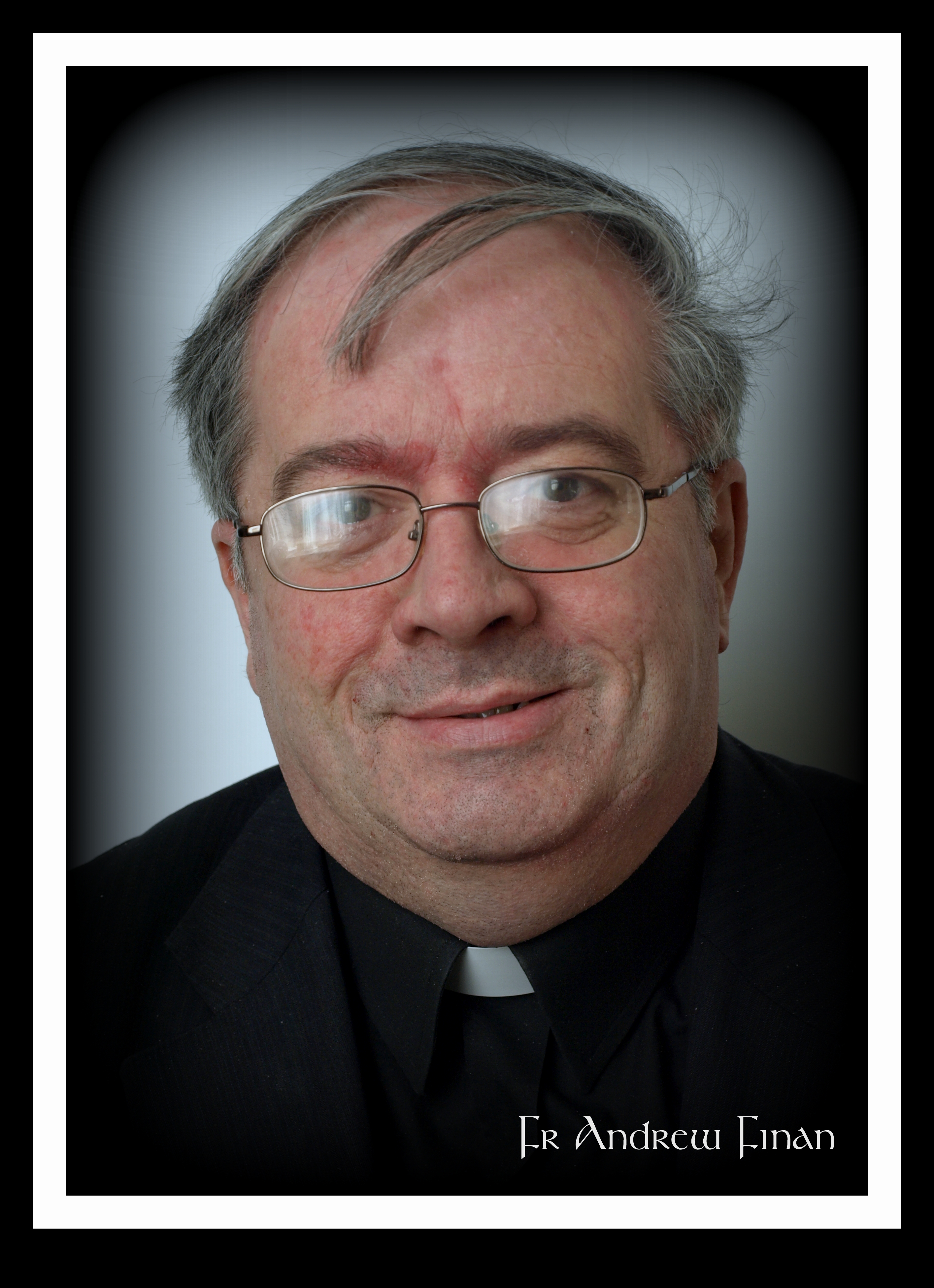
by Vincent | Feb 5, 2014 | General Interest, Reflections, Religion
 On Sunday morning, February 2nd 2014, Fr Andrew stepped into that Eternal Truth in which he believed, about which he preached and to which he invited many during his years of priestly ministry.
On Sunday morning, February 2nd 2014, Fr Andrew stepped into that Eternal Truth in which he believed, about which he preached and to which he invited many during his years of priestly ministry.
Ordained in 1980, he spent more than thirty years on the teaching staff of St Nathy’s College, Ballaghaderreen and was, at the time of his death, its Vice-President.
I never visited his rooms in St Nathy’s but, from memories of my time there as a student, imagine they were relatively simple – a sitting room and a bedroom, most likely – so the space he occupied during those years was relatively small but the rooms he filled immense. For the rooms into which he stepped each day were the rooms of the mind and the imagination, the rooms of truth and discovery, the rooms of enthusiasm and the rooms of inspiring faith.
The rooms – were his students. Initially St Nathy’s was an all-boys school but early enough in his time there, the schools of the town amalgamated and St Nathy’s became a co-ed school so, for almost thirty years, boys and girls from Ballaghaderreen, Gurteen, Frenchpark, Kilmovee, Carracastle, Monasteraden, Tibohine and many more places came to know him as priest and teacher – educator and entertainer. Like all teachers he lived in that strange place where the age of the audience remains constant though, for himself, the clock kept ticking and the years passing. He seemed however to keep apace with that change and retained an ability to connect, year in and year out with his students.
I often wonder what he was like in class. In conversation he was like a waterfall, words and ideas, phrases and images, puns (never intended of course!!), places, poets, songs, stories and of course, God … all fighting for their corner – all important – all hitting the river of life, the source and feeding again, the waterfall of his mind. I imagine, at times, he was all over the shop in the classroom and that bits and pieces were dragged into a well-ordered curriculum that may once have looked good on paper at a Department of Education meeting, but Andrew felt it was just a helicopter pad! I’d say he left pupils reeling at times – “What was that about?” It’s likely nonetheless that years later, maybe in a local field or office, a Government department, a classroom, a kitchen or perhaps on the Tube in London, the subway in New York or looking out over Sydney Harbour, some of those students thought, “Ah, that’s what he was saying to us …..”
It often takes time to recognise the truth, to appreciate the depth and to recognise the genius.
I was never a student of Andrew’s. I started my days in Maynooth, more or less the same time he walked into the Staff Room in St Nathy’s. I remember him coming to visit us in Maynooth with another priest of the diocese sometime during my first year there. He told us that he’d met a student in St Nathy’s that day – one I remembered well from the previous year and one that I’d have thought was a bit on the wild side! (Who am I to judge??) He told us that he stopped him on the corridor and said “Is there anything I can say or do to influence you to become a priest?” He looked at us for reaction and then said “Now, I’ve called him, it’s up to God to choose him”!! I remember laughing when he said this. Oddly enough I don’t think Andrew laughed. It’s clear to me now that he was exactly on the button. The call has to be direct. It can’t be much more direct than the one he offered that day. No, he didn’t become a priest but he heard a very direct call. I’ve no doubt but that lad went home with a fresh thought that evening – “Was Fr Finan serious?” He was ….
So, I was never his student and have no idea how he was in class. I have been a brother priest for nearly twenty-seven years, nine of those in Ballaghaderreen where he also lived. I heard of his homilies at the 8am Mass on many Sundays. People either got them or they didn’t but he seemed to have a flow of thought that either carried you or overwhelmed you!! Either reaction, it seems to me, is acceptable and far, far better than indifference.
I remember someone telling me that he went one day from the word “Levite” in a Scripture passage to Levi Jeans and explained that the levites were makers of tents, canvas, denim and …. Who knows, maybe as someone searched later in the day for a coin in the bottom of a jeans pocket, the mind went back to 8am Mass, the Levites, the callings, the miracles – back to the Altar and Eucharist. That’s why he made the connection … so that the penny might drop as someone searched for one.
What I know today for certain is that it’s in the past twelve months I came to know the man we buried yesterday. Just over a year ago, I stood at the back of Corrownagh Church (Ballisodare Parish) and heard him speak at his mother’s Funeral Mass. I was too late to join the concelebrants but happy to stand at a distance and listen to a son speak so lovingly of his mother and reassuringly to his only brother. His mother had been ill for many years and, towards the end the illness took her sight and voice. He spoke of her “White Martyrdom”, recognised by the church as the sacrifice offered without the spillage of blood – the offering of one’s sufferings for the greater Glory of God. He talked about the noises she made that, his brother seemed better able to interpret, and compared them to a ship, lost and out on the sea, sounding its fog horn in search of recognition and the reassuring response from the lighthouse. He spoke of her moving from Nazareth House to the hospital and asking for a scarf to cover her head. He said he wondered why she needed this, since she was moving from one enclosed environment to another. He then realised she wanted to cover her head, since that’s what women of her day, did in public. It was a sign of reverence for God that you covered your head. That’s where his mother’s request had its roots. He used a fourth image that, within days, I’d lost and I remember texting him and asking for it. In fairness, he replied almost immediately with the word but, out of context I couldn’t make the connection. I felt very proud of him that day and thought he did his mother – his brother – a great service and not without personal cost.
He stood at the back of the church that day, looking worn and tired but acknowledging all who passed by. It was, more than likely, a turning point for him. He hadn’t been very well for a while before that but we didn’t realise what lay in store.
I wasn’t at the Month’s Mind Mass but he told me afterwards he had to be helped into the church. He was happy nonetheless and obviously so, that he had been able to celebrate his mother’s Funeral Mass.
Some weeks later, Andrew was diagnosed with Motor Neurone Disease. Bishop Kelly spoke to us of that at the Funeral Mass yesterday (a truly powerful homily) and of the obvious consequences that diagnosis held for Andrew – indeed for us all.
It’s since that time, and regretfully so, that I came to know, more fully and meaningfully the man that was Andrew. I visited him with James McDonagh in Galway and that was the first of a number of visits over the months. Each time, I came away realising what a good man he was.
He was so grateful to people. He was especially grateful to the students in St Nathy’s who were so kind to him. He told me that he had a number of falls in the school and the students treated him with such kindness. I’m sure he knew, deep down, that he had a very influential part to play in the development of that same kindness.
I went to see him before going to America and thought it probable that I might not see him again. He asked me for a blessing and, before giving it I said “and you might give me one”. I said the words, made the sign of the Cross and, as I was about to leave he looked directly at me. His arms and hands, at this stage, were powerless and lay unmoved by his side. He blessed me with words – “As one whose journeying has stopped, I pray God’s blessing on your journey. As one who cannot move, I ask God to bless every step you take, to help you enjoy life to the full ……” I can’t remember the exact words after that but I truly felt blessed. If I was a young lad again on a corridor in St Nathy’s, he’d have influenced me to become a priest ….
I’m glad we had other times to chat after that. I called to see him one day and he looked at me and said; “I’m here thinking about Philip Corcoran from Monasteraden” Philip died in June 2012, he too had MND. Andrew knew that I’d known him and celebrated his Funeral Mass. The link was obvious. He asked me about him and, deep down, he was probably wondering about time.
Bishop Brendan spoke to us yesterday about Andrew’s use of that time. It was so reassuring to know that Bishop Brendan spent so much time with him – vital time, blessed and sacred – God bless him for that time spent. He said the last words he was able to decipher from Andrew were “I don’t mind” … He also told us that a number of weeks ago, Andrew indicated that he wanted him to read some Scripture to him and the passage his motions directed Brendan to was the dreaded moment for Jesus of the “agony in the garden”. That was the Gospel Passage reflected upon at the Funeral Mass yesterday. Andrew surely knew that garden.
He knew too the support of Peter, James and John – that collection of family, friends and medical professionals who accompanied him in the garden. I’m sure at times they felt sleepy and wondered if they stayed awake with him – I’m sure we all wondered if we could do more – but the truth remains, they were close at hand, loyal and giving. May his family and close friends know joy and receive solace from that truth.
Yesterday’s Funeral Mass was deeply moving, beautifully simple and absolutely essential. It gave us a chance to gather around Andrew, his priesthood and his memory. It gave us too, the chance to recognise that “Garden” of suffering and of blood-soaked tears, where we meet difficulty, ask questions, find the scent of an answer and somehow, the strength (that is God) to carry on.
Andrew is now buried in his native parish. I travelled with the funeral from Ballaghaderreen, through my own parish of Gurteen, onto Ballymote, Collooney and out the “old road” to Ballisodare. I was impressed to see many of the cars we met along the way, pull in, stop a moment and acknowledge that someone (most likely unknown to them) had died. It’s a lovely tradition – that we allow our lives stop for a moment because someone else’s has stopped – and I think Andrew too would have liked that.
The stopping is over now, the prayers are said now and the grave filled in but the man, the priest, the memories remain. There’s no doubt the memories will fade in time for many of us and life will go on as usual but there’s something telling me that his name will pop up in conversation and in prayer many times.
His mother’s influence, her White Martyrdom, her calling to the shore, her covering her head in reverence … none of it, absolutely none of it, was wasted on him. He learned well.
May Andrew rest in peace.
______________________________
A message board is available on our diocesan site if anybody would like to share a memory of Fr Andrew. Click here
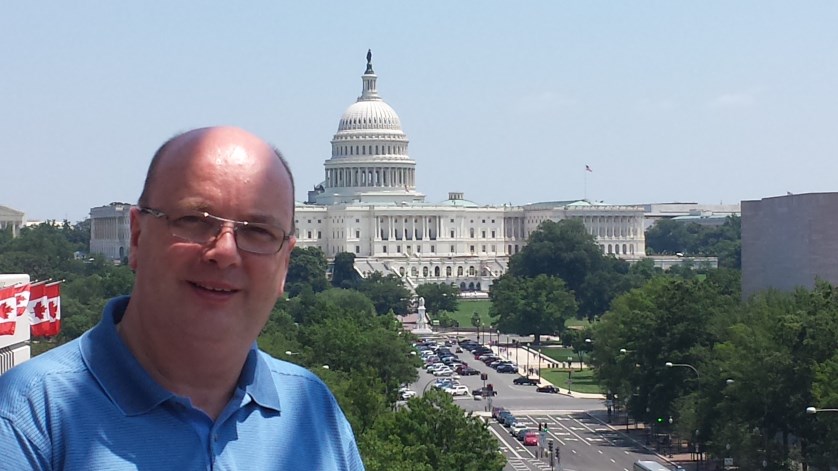
by Vincent | Jan 27, 2014 | General Interest, Religion, Songs, Holidays, Photography, Video Clips
Some friends sent me this link last night. It was a moment from pre-Christmas Washington DC – in one of the many museums there. (The photo above was taken by those same friends on the balcony of this museum – “The National Air and Space Museum)
Though the moment may have passed, and the season being celebrated too, it strikes me that it’s always in season to do the right thing and to bring a bit of joy to people while acknowledging “Jesu” the joy of man’s desiring …
[youtube=http://youtu.be/gIoSga7tZPg?rel=0]
Jesus, joy of man’s desiring
Holy wisdom, love most bright
Drawn by Thee, our souls aspiring
Soar to uncreated light
Word of God, our flesh that fashioned
With the fire of life impassioned
Striving still to truth unknown
Soaring, dying round Thy throne
Through the way where hope is guiding
Hark, what peaceful music rings
Where the flock, in Thee confiding
Drink of joy from deathless springs
Theirs is beauty’s fairest pleasure
Theirs is wisdom’s holiest treasure
Thou dost ever lead Thine own
In the love of joys unknown
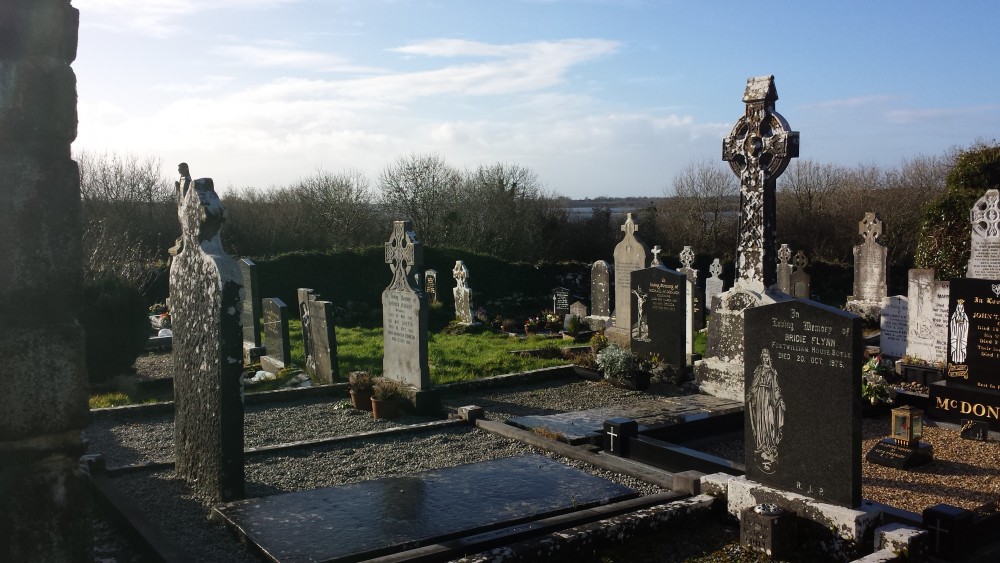
by Vincent | Jan 22, 2014 | Reflections, Religion, Photography
Earlier today I went to the home of a friend in Monasteraden for lunch. Before that I called to the garage at home for a while and, since I had a bit of time between that and the time set for lunch, I decided to visit a few people. I called to see Maureen O’Neill, our neighbour, and was happy to see her and Anne McKeon who was visiting at the time. We had a chat for a while and I was reminded again how good it is to have that freedom to be able to call to one another’s homes. There’s no doubt, we don’t do it often enough …. Sorry, I don’t do it often enough.
When I left there I thought that I’d go and say a quick prayer for my parents at their grave in Templeronan. I was there just before noon and, remembering that the Angelus was one of my mother’s favourite prayers, I said it there with and for them.
I was about to leave the cemetery when I decided that I was in no rush and that I’d take a bit of time there near my parents’ grave. I think I know almost everyone who is buried in that part of the cemetery – my uncle Joe, being one of the first – if not the first – God rest them all. My Godmother, May Callaghan and her husband Mattie are in the next plot to my parents. My classmate, Fr Oliver McDonagh, just down the path, Tony Scanlon, Joe McDermott, Pat Doherty, James McGrath, Christy McLoughlin, Mike Joe Mulligan, Hugh Breslin and so, so many more – all people I knew and was reminded of again today as I walked around and said a quiet prayer for them all.
Having spent a bit of time there, I decided to wander into the older part of the cemetery where my mother’s people are buried – her grandparents, parents, brother John and her aunt Jane. John was the only one of them I knew. The others I knew through their being named by my mother.
I wandered around the older part of the cemetery and saw names there that I’d never heard of, Callery being one, and I wondered has that family totally disappeared now. Other names brought back many memories, Matthew Giblin (my aunt’s father) and his wife Elizabeth. I was amazed how long it is since they’ve died. I saw Tom Quinn’s headstone and remembered him and, I think, his funeral back in the mid 70s. I saw the graves of Leo and Marcy McDermott and remembered those “ghost stories” Marcy told us in Mullaghroe and how afraid I’d be after them! My uncle John took them in his stride but they never sat easily with me! Happy memories of Leo and Marcy though. I saw Celia Hunt’s headstone and remember, as a child, visiting her home. I asked her for a drink and she told me she could get me a glass of water. Not impressed, I told her “I could get that at home”!! Peter, her husband, buried there too. I never knew him but remember my father talking about him. I saw Mick McLoughlin’s grave and remember him and Cuppanagh so well. I saw McDonaghs’ grave and, in particular, the photo of the man we all knew as “Little Bert”, whose funeral Mass I celebrated. I was surprised that he was just 60 – he always seemed so young but I hadn’t realised how really young he was. I was happy to celebrate his son’s Wedding Ceremony in the recent past. I saw the headstone of Mrs Wynne who died a month or so before I was ordained – I have a card her family sent to me at the time – I noted her son Joseph’s name at the bottom of the headstone, a reminder that he had remembered his parents and marked the place they’re buried so that someone like me might stop and say a prayer for them. There were so many names, so many headstones, so many memories.
These people are our past and maybe in my wandering for a while today, I am part of their present. Those names will float around a while with me …. take me to other days and other times – Mass in Cloonloo, marquees in the field, sports days near Lough Gara, Tug-of-Wars, people driving up home to get their cars fixed … people that made a difference to me.
 Those headstones tell so many stories – my grandparents’ one, in particular, remind me that my mother lost her father when she was about seven years old and that she was the oldest of three. Her mother lived for another thirty-five years and that Jane Healy helped her to bring up her children. My grandmother died when I was just under two years of age so I’ve no lived memory of her but my mother kept her real for us and knew how hard she had worked to provide for her family.
Those headstones tell so many stories – my grandparents’ one, in particular, remind me that my mother lost her father when she was about seven years old and that she was the oldest of three. Her mother lived for another thirty-five years and that Jane Healy helped her to bring up her children. My grandmother died when I was just under two years of age so I’ve no lived memory of her but my mother kept her real for us and knew how hard she had worked to provide for her family.
Despite the way it may seem, this was not a sad experience but rather one that put me feet first into my place and people.
I went from there to spend a short while with Madge Taheny in Mullaghroe. I hadn’t seen her in a while and knew that earlier this month she re-lived those days around Seán’s death as they marked his first anniversary. It was good to see her. It was mighty to see she has an iPad and well done to the family for getting it for her. I’ve no doubt she’ll make use of it. She told me she has visited my blog and I was glad to hear that.
It was time for lunch! I was hungry … I was happy to have remembered friends from other days and to be able to share a bit of time with the friends of now ….
A good day all round!
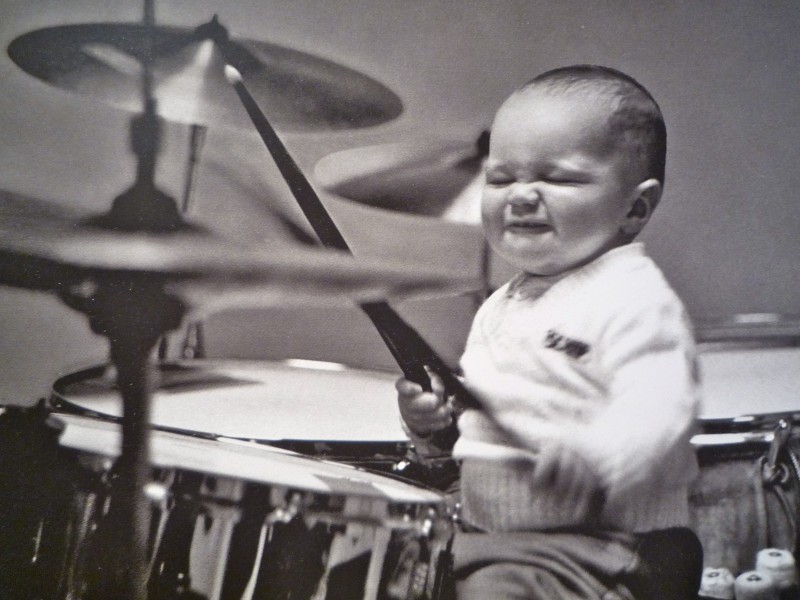
by Vincent | Dec 29, 2013 | Reflections, Religion, Songs, Video Clips
I found this version of the Little Drummer Boy the other day … thought it was lively and enthusiastic so worth a share!
[youtube=http://youtu.be/qJ_MGWio-vc?rel=o]

by Vincent | Dec 26, 2013 | Religion, Songs
[youtube=http://youtu.be/eEmX63rRo-8?rel=0]

